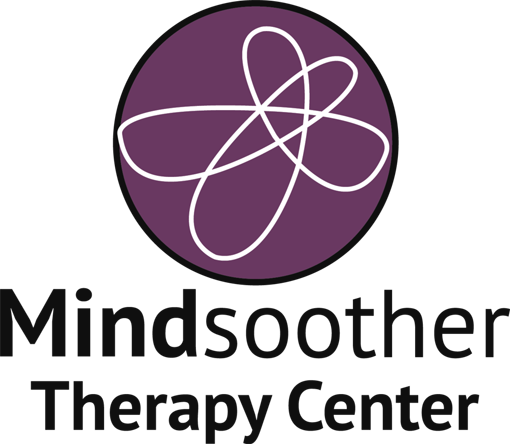The Power of Visualization in Reducing Anxiety
Anxiety can feel overwhelming, affecting both the mind and body in ways that make it difficult to focus, relax, or even breathe properly. When anxiety takes over, it can be hard to find a way back to calm. That’s where the power of visualization comes in to help ground yourself in the moment. This simple, yet effective relaxation technique can help you regain a sense of control, ease anxiety or stress by shifting your focus away from worries and into a peaceful, imagined space. Whether you’re at home, at work, or preparing for a stressful event, learning to harness the power of visualization can be a game-changer for managing anxiety and helping reduce stress.
What Is Visualization and How Does It Work?
Visualization, also called guided imagery, is a mindfulness technique that uses mental images to promote relaxation, reduce stress, and improve focus. The technique involves creating a vivid picture in your mind—whether it's a peaceful beach, a quiet forest, or a personal happy place—to help shift your thoughts from anxiety to calm.
The Benefits of Visualization for Anxiety Relief
The benefits of visualization extend beyond momentary relaxation. Studies show that when people practice visualization consistently, it can:
Lower stress hormones that contribute to anxiety
Improve focus and concentration by training the brain to redirect thoughts
Promote emotional resilience, making it easier to cope with challenges
Enhance physical relaxation, reducing tension and improving sleep
How to Practice Visualization for Anxiety Relief
You don’t need any special equipment to try visualization—just a few minutes, a quiet space, and a willingness to focus. Below are three different visualization techniques that can help ease anxiety.
1. The Safe Place Visualization
This visualization exercise helps create a mental escape where you can feel secure and at ease.
Find a quiet place where you can sit or lie comfortably.
Close your eyes and take a few deep breaths to center yourself.
Picture a place where you feel completely safe, happy or content—this could be a beach, a cozy cabin, or even a memory from childhood. This place could be a place that you’ve been before or a brand new place that you’d like to travel to one day.
Engage all your senses: What sights, sounds, smells, and textures are present? Focus and describe what you see around you and how you feel in that moment.
Imagine yourself fully in this space, breathing deeply and letting go of tension.
2. Guided Imagery for Relaxation
Guided visualizations use recorded scripts or a mental health professional guiding you through a relaxing scenario. These can be found online, through therapy sessions, or in meditation apps like the DARE app.
Find a guided imagery recording that resonates with you.
Sit or lie in a comfortable position.
Close your eyes and listen to the guidance, allowing yourself to fully immerse in the imagery.
Follow along, focusing on deep breathing and the emotions the imagery evokes.
This is a great relaxation technique for those who find it easier to be led into a peaceful state rather than creating their own images.
3. The Floating Cloud Visualization
This visualization technique is particularly helpful when dealing with intrusive thoughts or racing anxiety.
Close your eyes and imagine a bright, open sky.
Picture each anxious thought as a cloud drifting by.
Instead of engaging with the thought, simply observe it and let it pass. Notice the thought without judgement.
Continue this process, using deep breathing to stay relaxed.
Combining Visualization with Deep Breathing
For even greater impact, pair visualization with deep breathing. When we focus on our breathing, it allows us to focus inward and creates a sense of calmness even when our body is heightened.
When you’re feeling anxious, try this:
Breath in through your nose for four counts.
Hold the breath for four counts.
Exhale slowly through your mouth for six counts.
While doing this, picture a calming scene, like ocean waves gently rolling in and out with your breath.
By combining breathing exercises with mental imagery, you engage both your mind and body, reinforcing the calming effects and helping to minimize a panic attack.
How to Make Visualization a Habit
Like any skill, practicing visualization regularly increases its effectiveness. Here are some tips to integrate mindfulness into your daily routine:
Start with just 5 minutes a day—morning, before bed, or during breaks.
Pair it with another habit, such as meditation or journaling.
Use reminders, like phone alerts or sticky notes, to prompt practice.
Experiment with different settings, such as dim lighting, calming music, or aromatherapy, to enhance the experience.
The more consistently you practice, the more easily you’ll be able to use visualization in stressful moments.
Harness the Power of Visualization for a Calmer Mind
When anxiety takes hold, you don’t have to feel powerless. Harnessing the power of visualization can help you regain control, ease tension, and create moments of peace—anytime, anywhere. Whether you use a guided visualization, a personal mental escape, or a breath-focused technique, these exercises can become valuable tools for managing stress.
At Mindsoother Therapy Center, we help individuals and families develop effective strategies for managing anxiety and improving emotional well-being. We offer in-person and online therapy sessions for clients in Livingston, NJ, and surrounding areas.
If you’re ready to explore personalized anxiety management techniques with a supportive therapist, contact us today to schedule an appointment.

